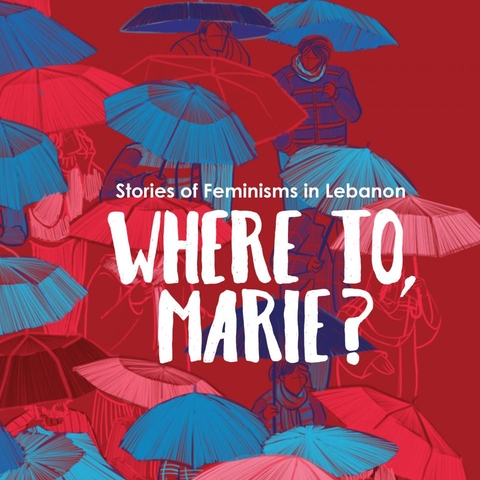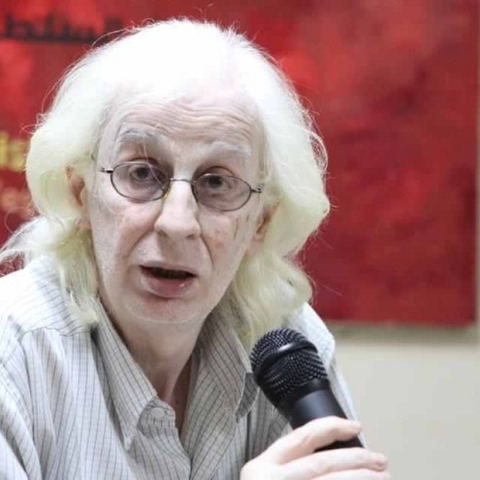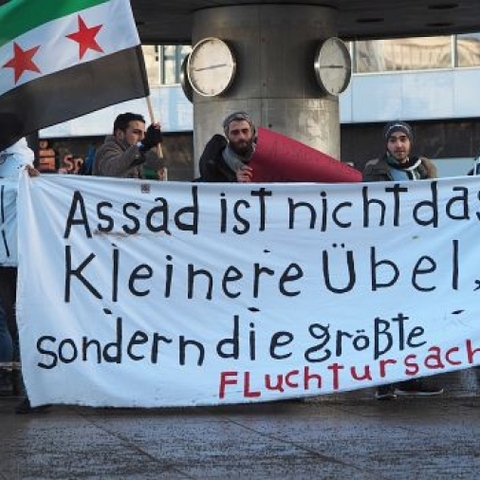‘Iranian Society Has Reached a Political, Economic, and Social Breaking Point’
On the Mass Protests in Iran and the Assassination of Qassem Soleimani
An interview with HS*, conducted by Miriam Younes and Mohamad Blakah
The November protests
How would you describe the political and social developments in Iran in recent years?
The Islamic Republic of Iran (IRI) has been in a state of crisis ever since its establishment. In recent years, events in the region have only exacerbated the situation. The United States’ withdrawal from the nuclear deal and crippling sanctions have brought the regime to the verge of collapse: we have witnessed economic turmoil, rising unemployment, and soaring prices as a result of inflation. Iran’s Shiite partners in the Middle East—such as Hezbollah in Lebanon—have also felt the effects of the IRI’s empty coffers. For decades, the regime has stifled opposition and criticism of all kinds.
All this has sown the seeds of widespread discontent among the population, resulting in repeated protests and uprisings—all of which the regime has suppressed with brutal force. The regime has also faced ideological crises and has no real vision for the nation, the economy, and society. The Islamic Revolutionary Guards Corps—which has become a kind of overly powerful economic consortium—and religious charitable trusts (known as Bonyads) with close government ties have monopolized the economy, helping to lead the regime down a dead end. Uprisings, which used to take place every five or six years, are now happening more and more frequently.
Why did protests break out in Iran in November? How do they relate to the developments you have just described?
Last November petrol prices tripled as a result of the sanctions and the budget deficit, triggering protests in more than 100 cities across the country. The regime’s economic mismanagement was not a direct result of the sanctions, but rather a manifestation of the system’s utter lack of ideas, which has been evident since the establishment of the Islamic Republic. The Islamic revolutionaries were seduced by the petrodollar, yet claimed to be the guardians and supporters of the oppressed and the poor. As a result, Iran is plagued by corruption.
The hike in petrol prices was the straw that broke the camel’s back: seething public dissatisfaction was now intensified by the skyrocketing cost of petrol, which hit the impoverished middle class particularly hard.
It is worth noting that this time, compared to previous uprisings, there was a higher participation of individuals from poorer social classes, in fact, they were one of the driving force behind the protests. Many of these people are young, unemployed men and women. Initially, the middle class did not play an active role.
What do protestors hope to accomplish, aside from showing their dissatisfaction with the rise in petrol prices?
Initially the protestors demanded a slash in petrol prices. But as the regime took brutal action against them, the demands became more general. They are now protesting against the system and broadly against those in power. Their slogans have become increasingly radical and are directed at the Iranian government elite and even the supreme religious leader, Ali Khamenei himself. This tells us people are growing less afraid of expressing their demands.
How did protestors organize without the internet? How were they able to mobilize and communicate with one another?
Because of the internet shutdown, only a few photographs and videos of the protestors exist. People living on the border of, say, Iraq, were able to post footage every now and then. Communication largely had to take place by telephone, and organizations like the BBC also conducted phone interviews.
According to media reports, approximately 7,000 demonstrators have been arrested. What do you think their fate will be? Are there estimates of how many people were killed during the November protests?
Estimates vary for the number of demonstrators who were shot or arrested. The regime itself has not published any figures. The families of those killed were pressured and forbidden to hold public funerals. Reuters has reported that approximately 1,500 people were killed. Amnesty International and a website affiliated with Mir Hossein Musavi, the leader of the Green Movement who has been under house arrest since 2008, estimate the death toll to be more than 300.
According to a recent report from Amnesty International, death certificates of those killed name the following causes: fractured skull, stab wounds to the chest and abdomen, internal bleeding, as well as contusions of the head or abdomen. The extent of the brutality is not yet known in detail. But we know for a fact that the regime deliberately killed and injured demonstrators.
On the fate of detainees, we can only speculate: there will probably be a few show trials, and the accused will state that they were paid by Western nations or by Israel—a procedure we have grown familiar with. The number of detainees is estimated between 2,000 and 7,000.
The Assassination of Qassem Soleimani
According to media reports, around 56 people died at Qassem Soleimani’s funeral, which drew huge crowds. What was Soleimani’s significance to Iran?
The Iranian regime has tried to take political advantage of the killing of Soleimani—they had to, given the ongoing demonstrations. The Islamic Republic’s propaganda machine did everything possible to portray him as a national hero, although his track record suggests otherwise. Soleimani’s career began in the 1980s during the Iran-Iraq War. He was a mid-level commander then, and gained rank and distinction only after the end of the war. Soleimani then joined the Quds Force, whose goal is to “export the Islamic revolution”, primarily to countries in the Middle East, in order to establish a Shiite hegemony and axis of opposition to Israel. In the beginning, Soleimani was responsible for Afghanistan. After the fall of Saddam Hussein, he became an important figure who promoted Iran’s interests in Iraq and Lebanon.
In 2011, as the Arab Spring began sweeping through the region, protests broke out in Syria and Soleimani travelled there, where he became a central figure in efforts to thwart the peaceful protestors, who were demanding democracy and the end of Assad’s regime. That means Soleimani was already active in Syria two years before ISIS established its caliphate. The legend—that he drove ISIS out of Syria—has no basis in reality. It completely neglects the central role played by the Kurds, the Iraqi military, and the 27-state coalition. Iranian propaganda turned Soleimani into a hero in the fight against ISIS—without providing any real evidence.
Soleimani emerged as a central player in the regime as far back as 1999, as the student riots in Tehran reached a crescendo. In an open letter to Khatami that he signed along with other high-ranking Pasdaran commanders,The Islamic Revolutionary Guard Corps (IRGC), also called the Revolutionary Guards or Pasdaran, is a paramilitary organization affiliated with the Iranian military. he threatened a coup d’état if the then president did not take harsh action against the students. Back then, Soleimani was known as the “commander of the putschists”. It is disconcerting to watch the reformists portray him as a hero and moderate now that he is dead.
Soleimani was also hostile towards the Green Movement. As protests rocked Iran last November, he asserted that killing tens of thousands of Iranians would be justified if it meant maintaining order in the country. Western news media has largely bought the regime’s propaganda, portraying Soleimani as the most important figure in the region.
By propagating lies, operating without transparency, and taking advantage of the patriotism of Iranians, the regime has managed to turn Soleimani into a national hero—something the Iranian people really need to help heal their wounded sense of national identity. That is why so many people took to the streets for his funeral. But that does not mean that they all also support the regime. If government critics were able to organize a demonstration, you would see just how many people would come together. So again, it is incorrect to assume that everyone who turns out for events like Soleimani’s funeral also supports the regime. We have seen it before, during the Cold War, or after the death of Stalin, when the governments of Eastern Bloc countries paid people to demonstrate. But Soleimani’s funeral in his home town of Kerman was a disaster for the region. Mass panic broke out, leading to a stampede that claimed the lives of some 60 people. The side streets along the funeral procession route were blocked off to make the crowd appear larger. But that also meant people had no escape route.
Many Iranians who are in fact anti-regime participated in the funeral procession, out of fear that a possible attack by the USA could propel Iran into a political situation similar to that of Syria or Libya. The regime tried to use this to their advantage, but their plans derailed when an Iranian missile accidentally shot down a Ukrainian passenger jet. The Iranian government has since admitted to it, but first denied the allegations and lied to the public for three days. That led to renewed demonstrations in Tehran and other cities. This time, many of the participants were students and members of the middle class, who are fed up with the regime’s audacity and lies.
How has Soleimani’s murder impacted the political dynamics of Iran?
The Iranian regime has lost an important leader. Propaganda has transformed him into a figure for the undecided masses to identify with. He was like a son to Ali Khamenei, and had risen to become his right-hand man. Soleimani’s death dealt the regime a cruel blow. They wer not expecting the USA to attack. Official talk has focused on revenge, but it was clear from the start that the country is not in a position to take military action against the United States. In the end, the regime staged an attack in Iraq for its supporters, but it was later revealed that they had given the United States warning an hour in advance.
The masses gathered at Soleimani’s funeral made it seem as if the regime enjoys broad support, but this illusion was shattered when the Ukrainian passenger jet was shot down and protests began anew.
The latest protests
Protests broke out again in Iran after the regime admitted to having accidently shot down a Ukrainian passenger jet. Photographs of protestors tearing down posters of Soleimani made the rounds. This image conflicts with that of the beloved general, whose funeral was attended by the masses. How can we reconcile this contradiction?
After the plane was shot down, the Iranian government first reported the cause as a technical malfunction, despite the fact that they had not carried out an investigation. They concealed the truth for three days. But the regime finally gave in to pressure from the international public and admitted its role. Many of the victims were Iranians living abroad. As a result, protestors flooded the streets of Tehran, and the protests soon spread to other cities. In their slogans protestors directly targeted religious leaders and the Revolutionary Guards. People felt powerless against a regime that was blatantly and deliberately spreading disinformation. We still do not know exactly what took place, especially because the plane’s black box was not released for analysis.
How would you describe the political opposition, both within Iran and abroad?
In Iran, the regime systematically fights and eliminates all opposition. In the eighties, more than 12,000 Iranians were executed, most of them high school and university students. To count the so-called “reformists” as forming part of the Iranian opposition, as is often done here in Germany—even by the Green party—is too simplistic. Even the demonstrators in Iran make it loud and clear in their slogans that the time for reform is over.
The political opposition abroad is extremely divided and, because for most of them Iran is a great distance away, they are not really in a position to analyse the situation in the country. Their role in the protests in Iran is therefore minor. But they can inform the international public about what is happening in Iran, and support the protestors through their solidarity.
You have been living in exile for several years. What’s your take on the protests? How can people outside Iran support the protestors?
The Iranian regime is at an impasse: any kind of political concession would alter the Islamic Republic as we know it. Iranian society has reached a political, economic, and social breaking point, and the US sanctions have made the situation even worse. Changing course would have fatal consequences for the regime: if the religious Bonyads and Revolutionary Guards were to lose their influence over the economy, the regime would lose its source of income, limiting its military power. If Iranian leaders stopped interfering in other countries in the Middle East, they would no longer be able to actively pursue their central agenda— as stated in the Iranian constitution—of exporting the Islamic Revolution. For Iran, it is crucial to form a Shiite alliance with Syria and Lebanon against Israel. If the Iranian regime permitted free elections or a referendum, the entire system would collapse. So the leadership has few options other than using violence and repression against its own people. Many are looking to the presidential elections in the USA, hoping that a democrat will come into power and end the sanctions against Iran.
As concerns the protests inside Iran, it is worth noting that they are supported by a range of social classes, and even the smallest spark could ignite new demonstrations. People are now criticizing the regime more freely. Even the so-called reformists are fractured, and many are beginning to question if the regime can even be reformed at all.
But the protests have not escalated to the point where we can speak of a revolutionary moment. Because the opposition is not united or organized, the general public fears that the situation could take a turn for the worse. Recent events in Syria and Libya are very much present in the minds of Iranians. And they are up against the regime’s apparatus of repression, which is capable of brutally crushing any protests.
The only way to help the protestors from outside Iran is by placing political pressure on the leadership to change course and meet the demands of the people—but I personally consider this highly unlikely. As I have already said, for those in power in Iran, making even small concessions would bring about their own downfall. That unfortunately gives us little reason to hope that the regime will soften their tactics of repression anytime soon.
* H.S. is a university lecturer who has been working on Iranian politics and society for years. Out of consideration for his family in Iran, his full name has not been disclosed here.
[Translated by Caroline Schmidt & Joel Scott for Gegensatz Translation Collective]



